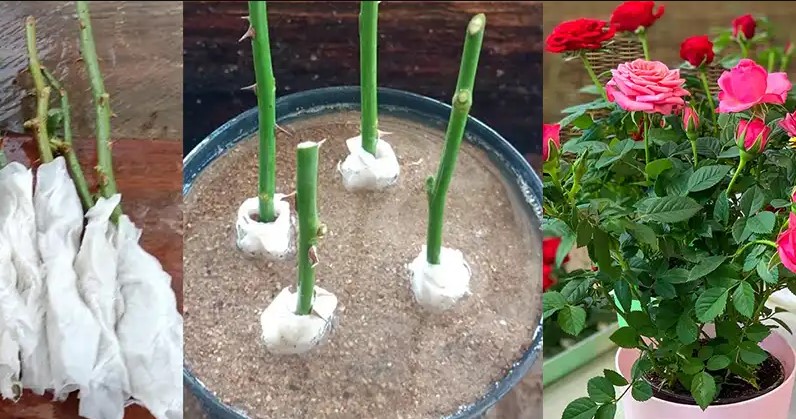Roses are beloved for their beauty and fragrance, making them a popular choice for gardens and landscapes. Propagating roses from cuttings is an excellent way to expand your rose collection or share your favorite varieties with friends and family. While there are various methods for propagating roses, one unique and cost-effective approach is using toilet paper. In this article, we will guide you through the process of propagating roses from cuttings using toilet paper, a simple yet effective method for creating new rose plants.
Materials You’ll Need
Before we dive into the steps, let’s gather the materials you’ll need for this propagation method:
- Healthy Rose Cuttings: Select a mature rose plant and take 6-8 inch cuttings from it, ideally during the dormant season or early spring. Choose stems with a few leaves and remove any flowers or buds.
- Toilet Paper: Regular, unbleached toilet paper will work perfectly for this method. You will use it to wrap the rose cuttings.
- Rooting Hormone: Purchase a powdered or gel rooting hormone to encourage root development in the cuttings.
- Plastic Ziplock Bags: You’ll need sandwich-sized plastic bags to create a mini-greenhouse for your cuttings.
- Garden Shears: These will be used to take the cuttings from the parent plant.
- Planting Pots: Prepare small pots filled with a well-draining potting mix.
- Watering Can: To keep your cuttings hydrated throughout the process.
Step-by-Step Guide
Now, let’s go through the process of propagating roses from cuttings using toilet paper:
Taking Rose Cuttings:
- Select healthy stems that are about the thickness of a pencil.
- Cut a 6-8 inch section of the stem at a 45-degree angle, just below a leaf node.
- Remove any leaves or thorns from the lower half of the cutting, leaving a few leaves at the top.
Applying Rooting Hormone:
- Dip the cut end of each cutting into a rooting hormone, ensuring it’s thoroughly coated.
Wrapping in Toilet Paper:
- Tear off a sheet of toilet paper and wrap it around the lower part of the cutting.
- This will help retain moisture around the stem and keep the rooting hormone in place.
Placing in Plastic Bags:
- Place each wrapped cutting inside a plastic ziplock bag, leaving the top slightly open for airflow.
- Mist the cuttings with water to keep them moist but not soggy.
Creating a Mini-Greenhouse:
- Seal the plastic bags to create a mini-greenhouse environment, which will help maintain humidity around the cuttings.
Waiting for Roots:
- Place the bags with the cuttings in a warm, bright location but out of direct sunlight.
- Over the next several weeks, check for root development by gently tugging on the cuttings. When they resist being pulled out, it’s a sign that roots have formed.
Transplanting:
- Once roots have developed (usually after 6-8 weeks), carefully remove the cuttings from the bags.
- Plant each cutting in a small pot filled with well-draining potting mix.
Caring for Young Plants:
- Water the newly potted rose cuttings, and place them in a sunny spot with indirect light.
- Gradually acclimate them to outdoor conditions.
Maintenance:
- Continue to care for your young rose plants as they grow, and transplant them into larger containers or the garden when they’re strong and established.
Conclusion
Propagating roses from cuttings using toilet paper is a cost-effective and eco-friendly way to create new rose plants. This method allows you to enjoy the beauty of your favorite rose varieties and share them with others. With a little patience and care, you can successfully propagate roses and expand your garden, all while minimizing waste by repurposing toilet paper as a useful tool in the gardening process.










